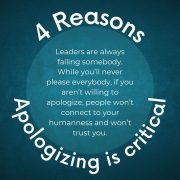Ten Steps For Building An Aligned Culture
A lot of people ask about our process for building an aligned culture. Here, in abridged form, is our process. We welcome your comments, suggestions, and feedback.
Step 1. Define your culture.
Decide on the scope of the culture that you are committed to build – that lays within your sphere of influence. Is it your company, department, division, community association, team, family?
Step 2. Define your leadership team.
Identify your 5-6 key leaders – allies that you will depend on to build your culture. These will be people who have the positional power, capacity, and commitment to make it happen. Be sure you have a Chief Emotional Officer on your team: a person with the positional power as well as the passion (a monomaniac with a mission) to take accountability for the culture.
Step 3. Get alignment at the top.
Identify your core values that you, as a leadership team, are committed to living. Have an “offsite” leadership meeting to ensure that you are all committed to living the values, first with each other and then with your entire culture. If you are a “subculture” – a culture within a larger system, you will want to take the larger organizational cultural value statements and make them real for your culture.
Step 4. Develop a team “code of conduct” with your leadership team.
Once you have decided upon your core values, you will need to develop a process that outlines your promises to each other: how you will hold yourself and each other accountable for living these values. This is about turning values into specific expected behaviors.
Step 5. Assess Alignment – And Connect to Reality.
Decide on a process for assessing your current alignment between your “vision,” your “claim,” and your “reality” as an entire culture. In order to do this you will need to pay attention to the “visible” culture and the “real” culture – your current reality. You may need to take the time to get into the hallways, the coffee conversations, etc. to get to the grapevine and current reality.
Step 6. “Roll out” your values with your entire culture.
Once you are clear about the current alignment, meet with your entire culture. Have your leadership team at the front of the room and outline:
- Your vision as a leadership team for this culture
- Your core values
- Your assessment of the current reality in your culture and the degree of alignment you see between your vision, your claim, and your reality
- Your leadership code of conduct
- How you expect to be held accountable for living these values as positional leaders – your promised actions as a leadership team
- An outline of the remaining process for getting these values lived at every level of the culture
Step 7. Have each of your leadership team members define – and build – their own leadership teams.
Meet with each of the leaders on your leadership team and help them define their own leadership teams, and go through the same process with their respective teams. This will continue throughout the culture until, ideally, every person is eventually assigned to a “leadership team” or at least closely affiliated with a leadership team.
Step 8. Engage your employees – at every level.
- Begin and sustain the process – and build trust – through the power of courageous conversations:
- Start – and continue – to create conversations around your core values, at every level.
- Turn every conversation about value statements into mutually agreed upon actions and promises.
- Tell the story. Schedule time in meetings, planning sessions, etc. to tell a story about where someone in the group recently lived one or more of your values.
- Shine the light. Acknowledge when and where individuals lived one or more of your values.
- Repeat the message. Find a way to get the message out there. Consider a cultural “kudos committee,” a group of committed people who find creative ways to capture the stories and get the message out there in organizational newsletters, bulletins, etc.
- Embrace the negative. Don’t be afraid of conversations that address misalignment between the claim and the reality.
- See mistakes as learning opportunities. Keep learning and growing together. Have high standards of yourself and others, and be patient with yourself. It’s about progress, not perfection. Keep reminding people that direction is more important than velocity.
- Stick with the winners. Put the majority of your time, energy, and resources into the people who are committed to living the values.
Step 9. Define how you will convey to stakeholders outside the culture how you will live your values.
- How will you convey your values to your customers?
- What needs to be written in your marketing materials/web site, etc.?
Step 10. Get your values into every system.
- Bring values into your hiring processes, your performance management system and HR practices.
- Only promote leaders who are living the values.
- Make it tough to not live the values.









